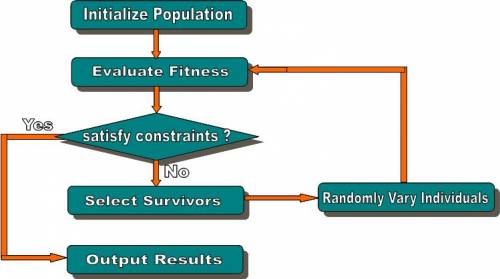| Section categories |
|
Related Subjects [38]
This category includes brief overview of all related subjects.
|
|
Defining BioInformatics [7]
In this section we tried to briefly explain what bioinformatics is ?
|
|
Unviersities [30]
This contains information about universities that are offering bioinformatics degree programs.
|
|
Resources [24]
Contains information about bioinformatics resources including databases, tools and techniques.
|
|
Algorithms [31]
This category includes some of the basic algorithms that are usually used by bioinformaticians.
|
|
| Statistics |
Total online: 1 Guests: 1 Users: 0 |
|
Home » 2011 » August » 21 » Optimization Algorithms
11:15 PM Optimization Algorithms |
Optimization Algorithms
1. Description: An optimization algorithm is an algorithm for finding a value x such that f(x) is as small (or as large) as possible, for a given function f, possibly with some constraints on x. Here, x can be a scalar or vector of continuous or discrete values. An algorithm terminates in a finite number of steps with a solution. An algorithm is a special case of an iterative method, which generally need not converge in a finite number of steps. Instead, an iterative method produces a sequence of iterates from which some subsequence converges to a solution. Many authors use "algorithm" more broadly for both finitely terminating algorithms and for iterative methods. 2. Conceptual Algorithm: 
3. Introduction: - Inspired by natural evolution
- Population of individuals
- Individual is feasible solution to problem
- Each individual is characterized by a Fitness function
- Higher fitness is better solution
- Based on their fitness, parents are selected to reproduce offspring for a new generation
- Fitter individuals have more chance to reproduce
- New generation has same size as old generation; old generation dies
- Offspring has combination of properties of two parents
- If well designed, population will converge to optimal solution
- Pseudocode:
 - Example Of Convergence:
 - Reproduction mechanisms have no knowledge of the problem to be solved
- Link between genetic algorithm and problem:
4. Basic Principles: - Coding or Representation
- String with all parameters
- Fitness function
- Reproduction
- Convergence
- An individual is characterized by a set of parameters: Genes
- The genes are joined into a string: Chromosome
- The chromosome forms the genotype
- The genotype contains all information to construct an organism: the phenotype
- Reproduction is a "dumb” process on the chromosome of the genotype
- Fitness is measured in the real world (‘struggle for life’) of the phenotype
5. Coding - Parameters of the solution (genes) are concatenated to form a string (chromosome)
- All kind of alphabets can be used for a chromosome (numbers, characters), but generally a binary alphabet is used
- Order of genes on chromosome can be important
- Generally many different codings for the parameters of a solution are possible
- Good coding is probably the most important factor for the performance of a GA
- In many cases many possible chromosomes do not code for feasible solutions
|
|
|
Category: Algorithms |
Views: 1500 |
Added by: Ansari
| Rating: 0.0/0 |
|
|
|




